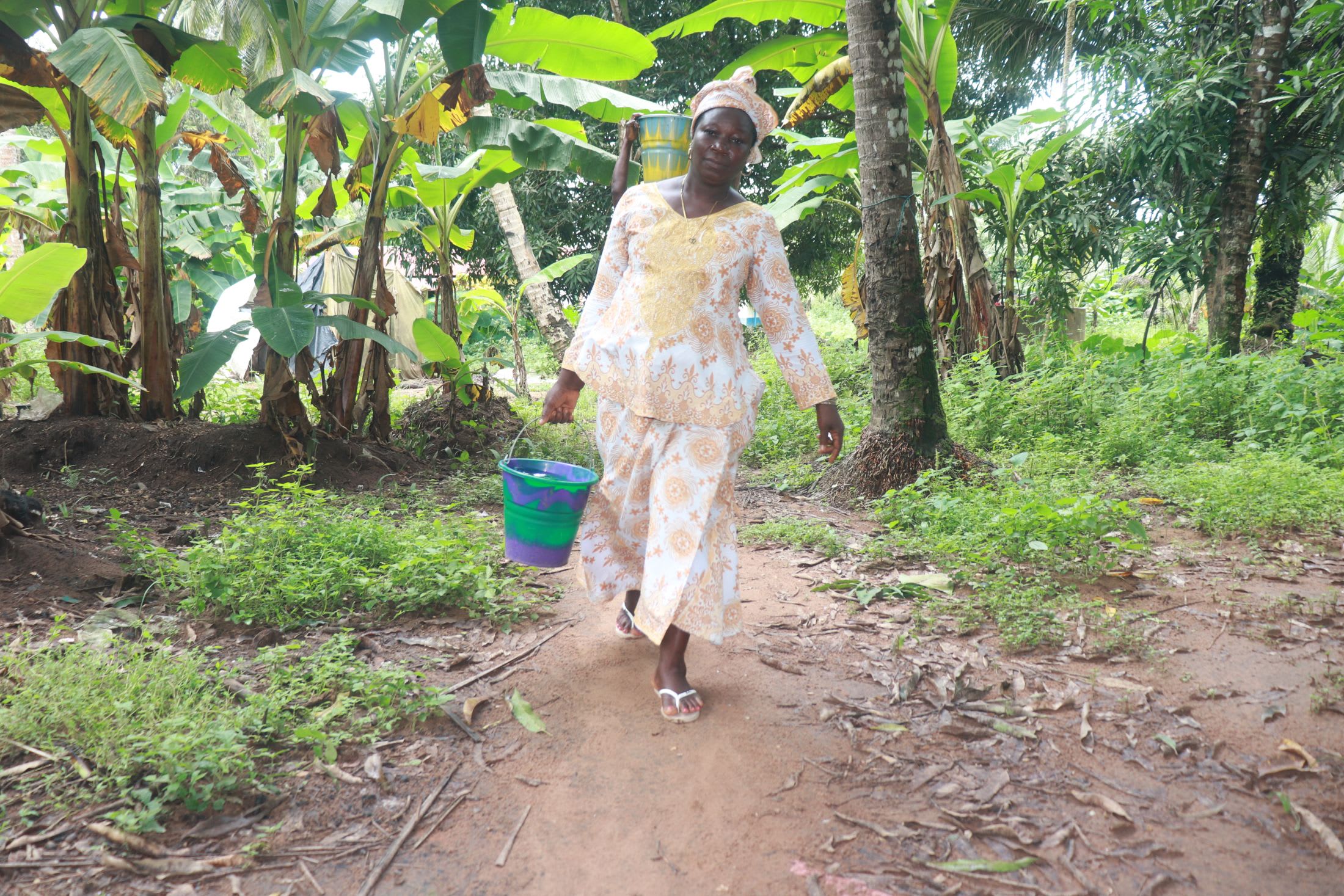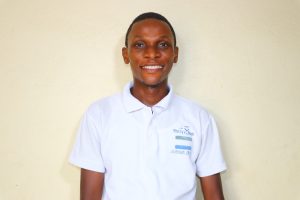340 people live in the Mamankie Community, which faces the challenge of not having a reliable water source since their well went dry months ago. They have access to three other wells, but they are overcrowded and require strenuous walks to reach them. The whole process is time-consuming and disheartening.

Field Officer Julius Sesay set the scene for us.
"The water users easily become feeble due to the long walking distance to the water points. Likewise, the waiting time at the water points makes some of them to be tired, especially the ones that fetch water from the health facility. The nurses will be busy fetching water for the running of the clinic [and] unless the community members wait until they are through [the] situation makes some of the community members leave this water point and go to the mosque. They equally experience the same here because the well at the mosque gets busy during the time of prayer. Most worshippers will go with their ablution kettle to fetch water. During such instances, patience is needed by water users that need water urgently to cook, launder, and do other things at home," shared Julius.
Sixteen-year-old Kadiatu is a teenager doing her best to get through this hard situation.

Kadiatu.
"It has been difficult for me to fetch water easily ever since our well got faulty. I had no choice but to fetch water from either the well at the mosque or the well at the clinic. Fetching water from either of these sources is time-consuming because of the walking distance. They are far away from our house. Apart from that, these wells run dry and easily break down. The thing that pains me most is when the clinic staff restricts me sometimes [from] fetching water from the well. They always say that the well is meant for the clinic, and they do not like disturbances. They will only allow me to fetch when they are happy. All this makes me tired of living in this community," Kadiatu bravely shared.

The distant well at the health clinic.
The water crisis also steals precious time from Kadiatu's education. She can't control the circumstances or how much time and energy she must commit to her daily responsibility of collecting water.
She said, "Going to school on time shows that a student is ready to learn. In my own case, most teachers have the thinking that I go late to school intentionally. They fail to realize that it is very difficult for me to fetch water in the morning hours and do some house chores before going to school. Moreover, my school is more than two miles from this community. Most times, I trek to school because my parents cannot afford to always pay transport fees. All this makes me not to be punctual in school. There are times I miss classes and even test exams in school. This even made me repeat my present class."
It is a heavy burden for Kadiatu to bear.
"Each time I am sent to fetch water, I feel sad, not because I do not want to go but [because] I consider the difficulties I face to fetch water for my parents. There is no way I can escape this situation. Sometimes, I go in search of water on an empty stomach. It's not easy because one must have enough energy to fetch water. After fetching water, I must help my mum to prepare food for us to eat. I will pound the pepper by using the mortar and pestle and peel the onions. By the time we are through to cook, time will have gone. Even to launder my school uniforms becomes a problem," she continued.

Community members cleaning fish.
There is not enough time and water for Kadiatu leaving her hopeless at times. That's a hard place to be. We need to rehabilitate the community's well. Rehabilitating the Mamankie Community well will resolve the seasonality issues and make it a clean, reliable source that Kadiatu and the rest of her community can utilize.
Kadiatu has future goals, and water will help empower her to accomplish them. "I want to be a nurse when I grow up," Kadiatu said.

Kadiatu collecting water from one of the distant wells.
Note: Our proposed water point can only serve 300 people per day. We are working with the community to identify other water solutions that will ensure everyone has access to safe and reliable drinking water.
Steps Toward a Solution
Our technical experts worked with the local community to identify the most effective solution to their water crisis. They decided to drill a borehole well, construct a platform for the well, and attach a hand pump.
Well
Abundant water often lies just beneath our feet. Aquifers—natural underground rivers—flow through layers of sediment and rock, offering a constant supply of safe water. A borehole well is drilled deep into the earth to access this naturally filtered and protected water. We penetrate meters, sometimes even hundreds of meters, of soil, silt, rock, and more to reach the water underground. Once found, we construct a platform for the well and attach a hand pump. The community gains a safe, enclosed water source capable of providing approximately five gallons of water per minute. Learn more here!
Community Education & Ownership
Hygiene and sanitation training are integral to our water projects. Training is tailored to each community's specific needs and includes key topics such as proper water handling, improved hygiene practices, disease transmission prevention, and care of the new water point. Safe water and improved hygiene habits foster a healthier future for everyone in the community. Encouraged and supported by the guidance of our team, a water user committee representative of the community's diverse members assumes responsibility for maintaining the water point, often gathering fees to ensure its upkeep.

 Borehole Well and Hand Pump
Borehole Well and Hand Pump

















